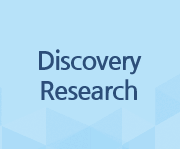| 1 | Discovery of a Novel Highly Selective Histamine H4 Receptor Antagonist for the Treatment of Atopic Dermatitis. J Med Chemm, 2018, 61(7), 2949 |
| 2 | Role of aspartate 351 in transactivation and active conformation of estrogen receptor α. J. of Mol. Endocrinol., 35, 449-464, 2015. |
| 3 | The therapeutic efficacy of the novel uricosuric agent UR-1102 for hyperuricemia and gout. EULAR (The European League Against Rheumatism) Congress, 2013 |
| 4 | Discovery of Tofogliflozin, a Novel C-Arylglucoside with an O-Spiroketal Ring System, as a Highly Selective Sodium Glucose Cotransporter 2 (SGLT2) Inhibitor for the Treatment of Type 2 Diabetes. J Med Chem, 2012, 55, 7828 |
| 5 | 9-Substituted 6,6-Dimethyl-11-oxo-6,11-dihydro-5H-benzo[b]carbazoles as Highly Selective and Potent Anaplastic Lymphoma Kinase Inhibitors. J Med Chem, 2011, 54, 6286 |
| 6 | Newly discovered orally active pure antiestrogens. Bioorganic & Medicinal Chemistry Letters , 16, 4959-4964, 2006. |
| 7 | Discovery of thiochroman derivatives bearing a carboxy-containing side chain as orally active pure antiestrogens. Bioorganic & Medicinal Chemistry Letters , 16, 4090-4094, 2006. |
| 8 | Discovery of thiochroman and chroman derivatives as pure antiestrogens and their structure-activity relationship. Bioorganic & Medicinal Chemistry, 14, 4803-4819, 2006. |
| 9 | Role of aspartate 351 in transactivation and active conformation of estrogen receptor α. J. of Mol. Endocrinol., 35, 449-464, 2005. |
| 10 | Rapid Screening of Drug Absorption Potential Using Immobilized Artificial Membrane Phosphatidylcholine Column and Molar Volume. Chromatographia, 60, 399-404, 2004. |
| 11 | Evaluation of KCB-328, a new Ikr blocking antiarrhythmic agent in pacing induced canine arterial fibrillation. Europace, 6, 384-391, 2004 |
| 12 | Differential Recovery of Action Potential Duration and HERG Currents from the Effects of Two Methanesulfonamide Class Ⅲ Antiarrhythmic Agents, KCB-328 and Dofetilide, Journal of Cardiovascular Pharmacology, 42(5), 648-655, 2003. |
| 13 | Ikr Channel Blockers: Novel Antiarrhythmic Agents. Curr. Med. Chem.-Cardiovascular & Hematological Agents, 1(3), 203-223, 2003. |
| 14 | The antithrombotic efficacy of AT-1459, a novel, direct thrombin inhibitor, in rat models of venous and arterial thrombosis. Thrombosis and Haemostasis, 86(6), 1512-1520, 2001. |
| 15 | Electrophysiologic and antiarrhythmic effects of the new class III antiarrhythmic drug KCB-328 in experimental canine atrial flutter. J. Cardiovasc Pharmacol Ther., 6(3), 297-306, 2001 |
| 16 | In Vitro and In Vivo Studies of AT-1362, A Newly Synthesized and Orally Active Inhibitor of Thrombin. Thrombosis Research, 100(1), 97-107, 2000. |
| 17 | Clofilium, a potassium channel blocker, induces apoptosis of human promyelocyte leukemia(HL-60) cells via Bcl-2-insensitive activation of caspase-3. Cancer Letters, 147(1-2), 85-93, 1999. |
| 18 | Synthesis and Biological Activity of KCB-328 and its Analogues: Novel Class III Antiarrhythmic Agents with Little Reverse Frequency Dependence. Bioorganic & Medicinal Chemistry Letters, 9:85-90, 1999. |
| 19 | Studies on the New Factor on the Regulation of Contraction in the Balloon Injured Rabbit Carotid Artery. Kor. J. Gerontol, 8(1), 67-76, 1998. |
| 20 | KCB-328: A Novel Class III Antiarrhythmic Agent with Little Reverse Frequency Dependence in Isolated Guinea-Pig Myocardium. Journal of Cardiovascular Pharmacology, 31(4), 609-617, 1998. |
| 21 | Cloning and Nucleotide Sequence of the DNA Gyrase gyrA Gene from Serratia marcescens and Characterization of Mutations in gyrA of Quinolone-Resistant Clinical Isolates. Antimicrobial Agents and Chemotherapy, 42(1), 190-193, 1998. |
| 22 | Effects of a new class III antiarrhythmic drug, KCB-328 on canine arrhythmic models. The Japanese Journal of Pharmacology, 71(suppl I), 138, 1996. |
| 23 | Electrophysiological effects of KCB-328. A novel Class III antiarrhythmic agent in vitro. The FASEB Journal, 10(3), A32, 1996. |
| 24 | Frequency-dependent effects of KCB-328. A novel Class III antiarrhythmic agent in isolated guinea pig ventricular muscle. The FASEB Journal, 10(3), A32, 1996. |






